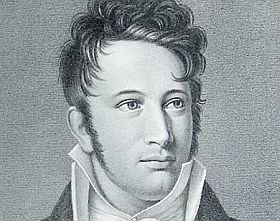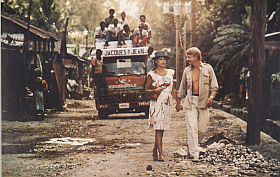


Jørgen Leth: A Midsummer Night’s Play

Thure Munkholm writes in the booklet in the box-set: “At first glance, it might seem to be quite a leap from these two fictional travel stories to Leth’s earlier TV production of A Midsummer Night´s Play, a classic from 1803 by denmark´s national Golden Age poet, Adam Oehlenschläger. But only on the surface. All three films, in essence, are concretised expressions of aviable material.
The images in Interference and Traberg emerge as small concrete poems in their own right. In A Midsummer Night´s Play, literary language, Oehlenschläger’s words and dialogue, serves a similar function. In his production of the play, Leth abstains from any form of modernisation, even including elements of the play that most updated versions would likely excise as so much archaic filler… Leth is mainly interested in stressing the tones and music of literary language.
The film’s main attraction, apart from the celebrated artist Per Kirkeby’s Golden Age-inspired sets, is Leth’s singular ear for Oehlenschläger’s language, sounding forth here in all its overwhelming beauty and metric wildness.”
Jørgen Leth: A Midsummer Night´s Play, Denmark, 1979 in the DVD-edition The Jørgen Leth Collection 19-21, 2008. The box no. 4 contains also Interference, 1983 and Traberg, 1992.
All films in the Jørgen Leth Collection have English subtitles.







